Project AWARE opens the door to understanding Iowa’s waters
By Kate Hayden, khayden@charlescitypress.com
Nobody likes to look at trash. But after volunteering on a river clean-up expedition, you start to view junk differently.

Seated low in the canoe, you start scanning the riverbank for signs of styrofoam or metal wire. You look for the shadow of a tire partially buried under sand or tall grasses.
Concrete embankments call to you, because although they attempt to delay ongoing soil erosion, the nooks and crannies are hiding spots for plastic bags, water bottles and other disposable artifacts.
I had my first river clean-up experience in 2016 with the Cedar River Festival in Waterloo, and I arrived for my first AWARE experience on Friday, ready to get hot and muddy for water quality. My intrepid partner for the day (and most other adventures) is Shane Wulf, watershed coordinator for the Miller Creek Water Quality Improvement Project (WQI) in Black Hawk and Tama counties.
It was our first day on the water, but I’d already spent much of Thursday talking to organizers about their work on the river, and I was there snapping photos at the dock behind the Floyd County Courthouse as volunteers like Floyd County Supervisor Linda Tjaden paddled up, beaming and with a canoe full of garbage.
“You’re on the wrong side of the camera,” Tjaden called out as she passed me.
By 8 the next morning, more than 200 volunteers were waiting to load into canoes — and Wulf and I were in the back of the pack.
****
You don’t have to know much about water quality to dig a pry bar out of the riverbank, but when you’re surrounded by DNR employees on a camping trip, it helps to have the context.
The truth is, tires on the sandbars aren’t what the headlines mean when water quality makes state news again and again.
Wulf spends his days taking water and soil samples in the Miller Creek watershed and forming conservation partnerships between the county, the state and the rural landowners in his territory.
Wulf — and the many county and state employees like him — daily confront Iowa’s nutrient problem. With every heavy rainfall, the landowners he works with lose more of the soil nutrients that make Iowa such a fertile state for corn and soybeans.
Nutrients like nitrogen wash into our rivers and high-tail it all the way down into the Mississippi River and out along the Louisiana coast, into the “dead zone.” We lose the fertilizer, and the Gulf of Mexico sustains heavy losses of biodiversity.
WQI’s like Miller Creek are part of a broader effort to combat nutrient loss — the Iowa Nutrient Reduction Strategy, which the state adopted in 2013. The goal is to reduce rural and urban nitrogen and phosphorus levels in the water by 45 percent.
We don’t have a dedicated WQI in Floyd County, but some of the practices that WQIs advocate are put into use by other means — such as the permeable pavers Charles City installed on a few streets in 2012.
Floyd County is involved with the Upper Cedar Watershed Management Improvement Authority (UCWMIA), which assesses monitors flood risks and explores practices to strengthen water quality and protect against flood damage.
In 2016, the Charles City Council approved joining a Regional Conservation Partnership Program (RCPP) with the UCWMIA as lead applicant on a rural-urban partnership, a $1.6 million grant federal grant going towards protecting the local watershed.
There’s more going on in our little corner of water conservation then I have the space for.
But WQI’s and watershed management authorities are inherently locally based, even if they cross over county lines like the UCWMIA. The state has yet to figure out what we can do to fund protection of our waters.
A bill to raise sales tax by three-eighths of one cent, to benefit the Iowa Natural Resources and Outdoor Trust Fund, was thought to raise around $180 million annually in sales tax. It failed before it could reach Gov. Terry Branstad.
Was it the right plan to fund water quality care? Better policy wonks than I have made the arguments, and will make the arguments again. Something — maybe partisanship? — isn’t working.
Sen. Rob Hogg, D-Cedar Rapids, joined Project AWARE on Thursday after talking to me about the expedition.
“When you get out on the river and see the condition of the river — the trash, we’re going to see erosion, we’re going to see things — it makes it real, it makes it tangible,” Hogg said.
Tangibles must find a way to turn into legislation somehow.
****
Our Project AWARE route on Friday was cut from 10-plus miles to five or so. Part of it was due to the Charley Western Trail bridge collapse in Charles City, and where the next access point to unload canoes would be.
A few staff members, enthusiastic but exhausted, were ready to wrap up tear-down early and be in their own bed after another successful week of heat and sun.
Generally, I’m not a competitive person. But it turns out when I’m surrounded by volunteers hunting and scavenging for literal garbage, I can get some tunnel vision.
During the Cedar River Festival last year it was immensely satisfying to pull yards of house siding out from under an overpass, to clean up the styrofoam remains of what appeared to be a teenage river get-together, to pick corrugated metal off the river bank. To wipe the slate “clean” again, and fill your canoe with the biggest, worst trash you could discover.
But on Friday, bringing up the rear wave of 200 volunteers, Wulf and I were struggling to pick up the scraps. Two miles in, we had found a bunch of pop caps, a couple of plastic bottles and some tin. Nothing like the big loads of wire fencing, a couch or even a tire.
Another mile in, I was feeling pretty discouraged. I kept mistaking mussel shells for pop cans in the sun. What were we bringing back? Where were the tires hiding?
That’s when another canoe pulled up near us — a veteran Project AWARE couple Wulf started talking to. I made some offhand remark — ”It’s been pretty slim finds back here,” or something.
“That’s good!” The woman pointed out. “It’s a chance to enjoy the river. At least there’s another set of eyes making sure nothing was missed.”
I got out of my head for a bit and realized what was happening. We were at the back of more than 200 volunteers — and that was only on Friday.
By the end of the week, organizer Lynette Seigley said, a record number of registered volunteers had joined the project: 484 volunteers, or an average of 240 volunteers a day — well above 329 total volunteers in 2016.
Total trash counts were still being tallied, but initial estimates included 3.27 tons of non-recyclable trash delivered to Floyd/Chickasaw/Mitchell county landfills; 8.5 tons of scrap metal recovered, and 348 tires recovered, “but I think that’s a bit low,” Seigley said.
“There’s people from all walks of life and it’s shocking to find out, maybe the person next to you is a mechanic, or maybe they’re the head of a big corporation, and it just doesn’t matter to you when you’re digging out a tire,” volunteer and planning committee member Dan Ceynar told me.
“I was really surprised at the end of the introductions (Monday), the number of people who said, ‘I’ve just never seen anybody angry on AWARE,'” he said. “There’s a spirit, there’s definitely a spirit to it.”
I met volunteers Christian, Wesley and another woman whose name I didn’t catch at the very end of the event, waiting to load the buses back to Charles City. Christian had done another full week on Project AWARE two years ago on the Big Sioux River, but it was the woman’s first week.
“I didn’t get my first tire until Wednesday, but I got another one today,” she told Wulf and me, smiling. If she wanted us to feel better about not bagging a big find, it did kind of work for me.
****
This year’s volunteers floating through Charles City included two senators, representatives from the Iowa Flood Center and students/staff with the University of Iowa IIHR-Hydroscience and Engineering department.
And then there were the locals: the landowners alerted by Project AWARE of the event, who decided to take responsibility into their own hands; the whitewater kayakers who get their weekend kicks from clean, fast-flowing river features; the two Cavanaugh kids, Tegan and Jace, who offered cookies and coffee from their grandpa’s boat to volunteers paddling past the property on Thursday.
“The local support was amazing along the route, and we’re very appreciative of that,” Seigley said.
If you missed Project AWARE, you have another chance: the Cedar River Clean-up and Festival, less than an hour south in Cedar Falls, Iowa. The festival takes place on July 29-30, and will celebrate its 30th anniversary caring for shorter branches of the Cedar each year. You can find more at www.cfrgroup.org.
We can’t solve the state budget, but we can take cleaner rivers into our hands — one tire, or bottle cap, at a time.

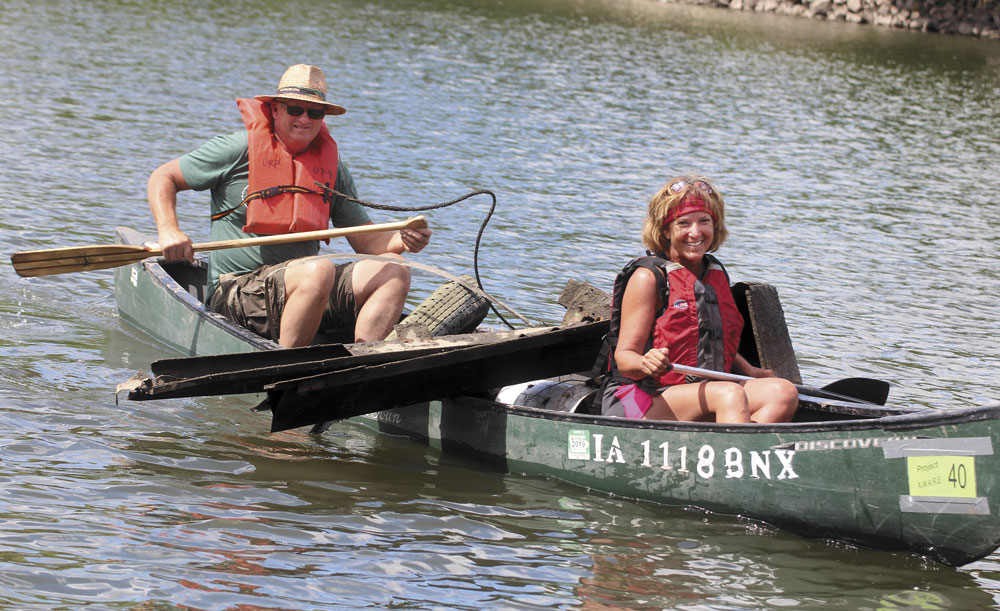
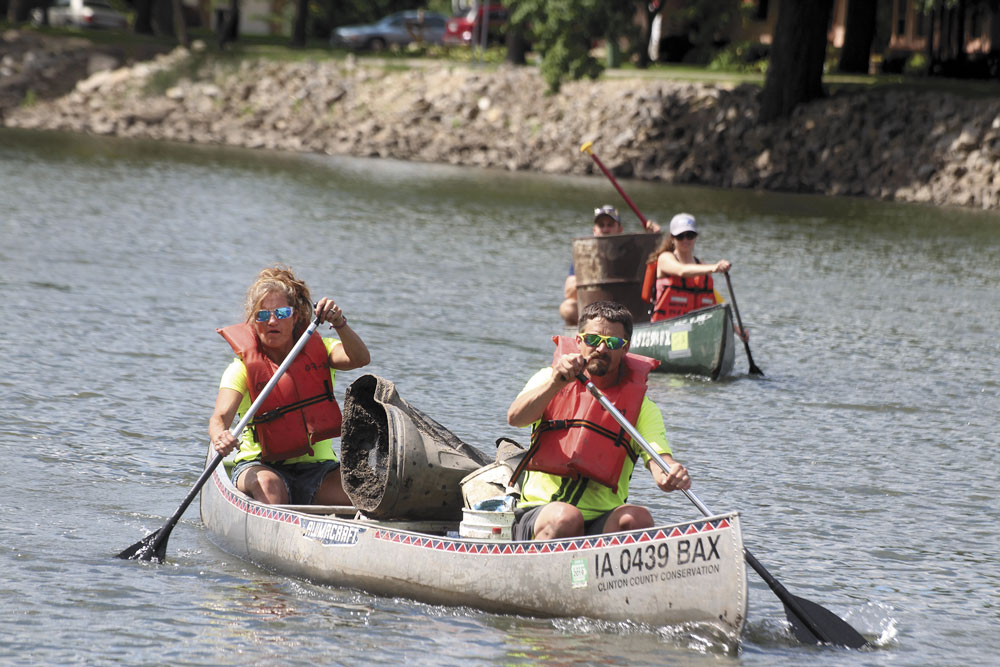
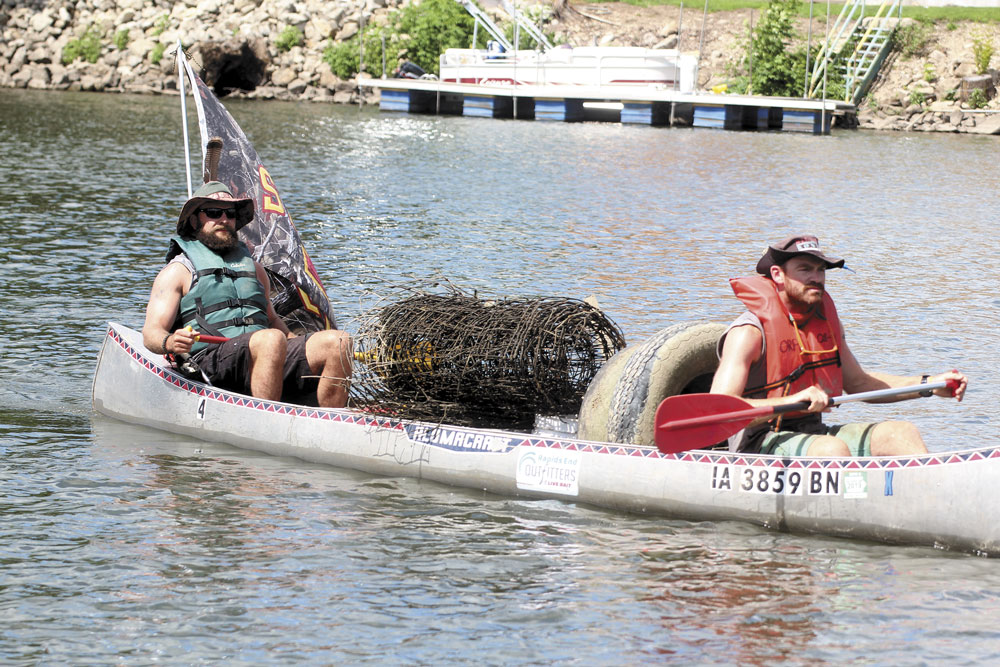
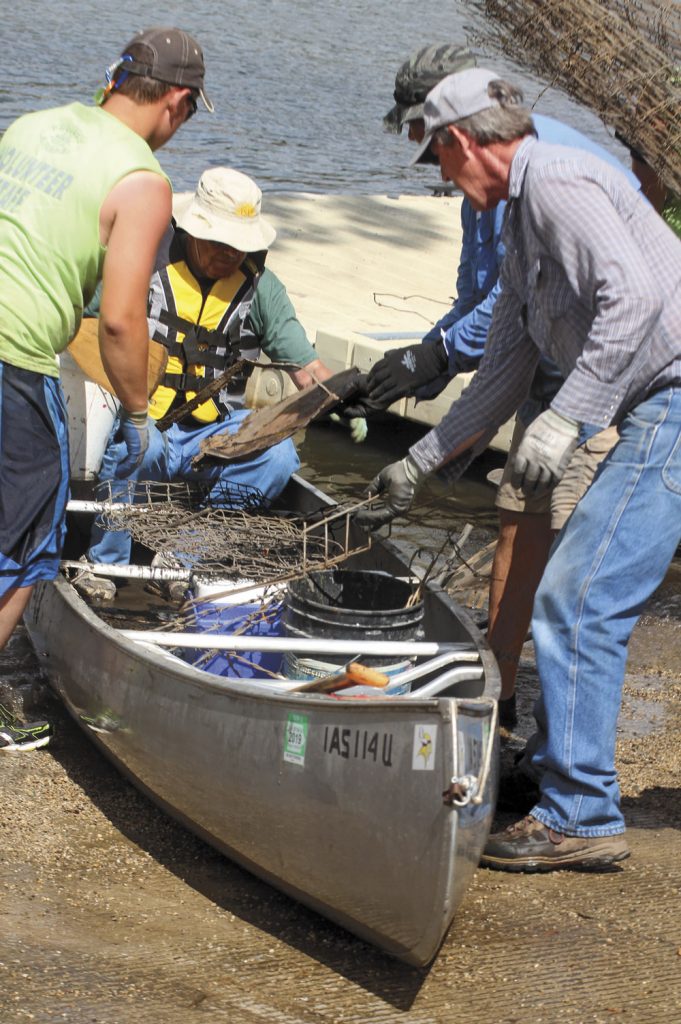
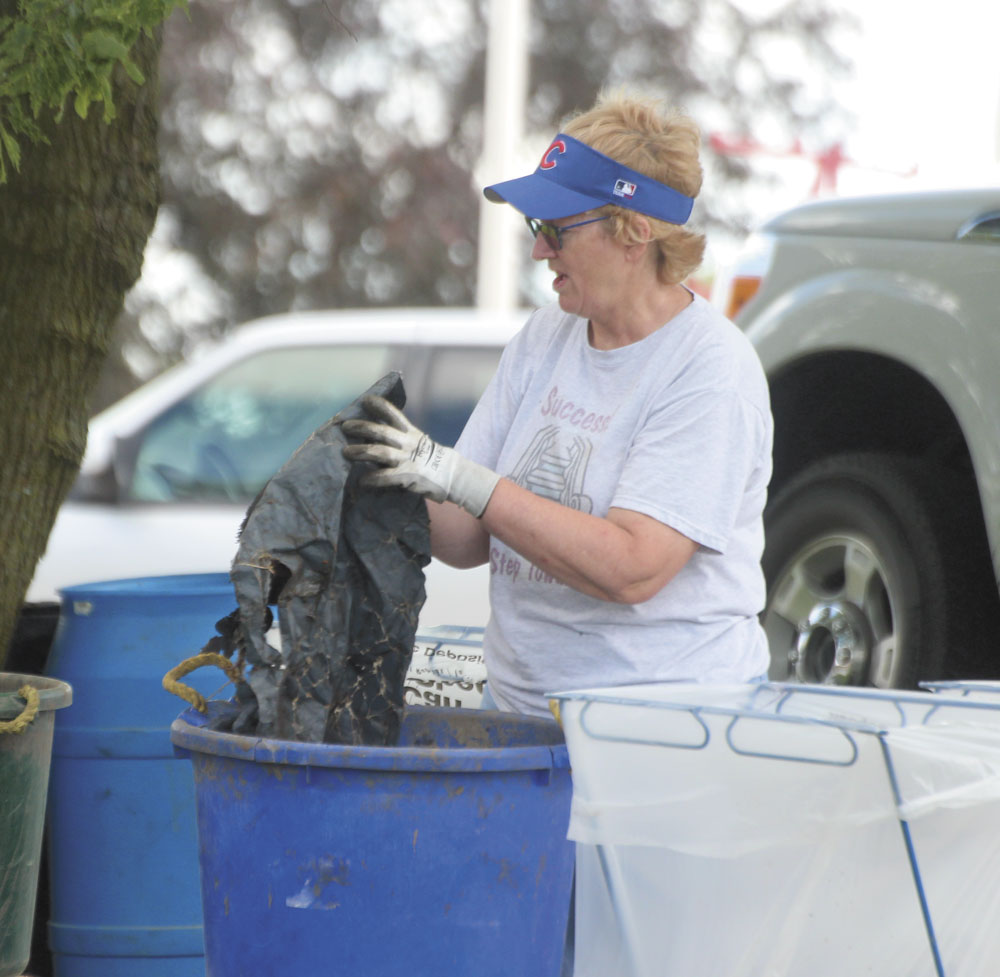
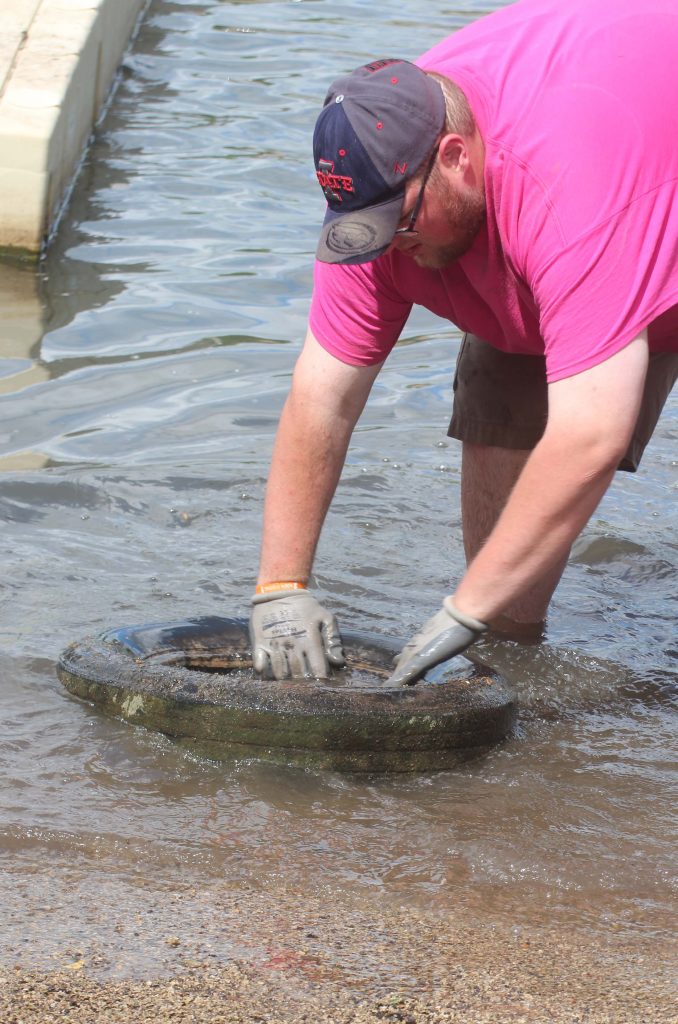
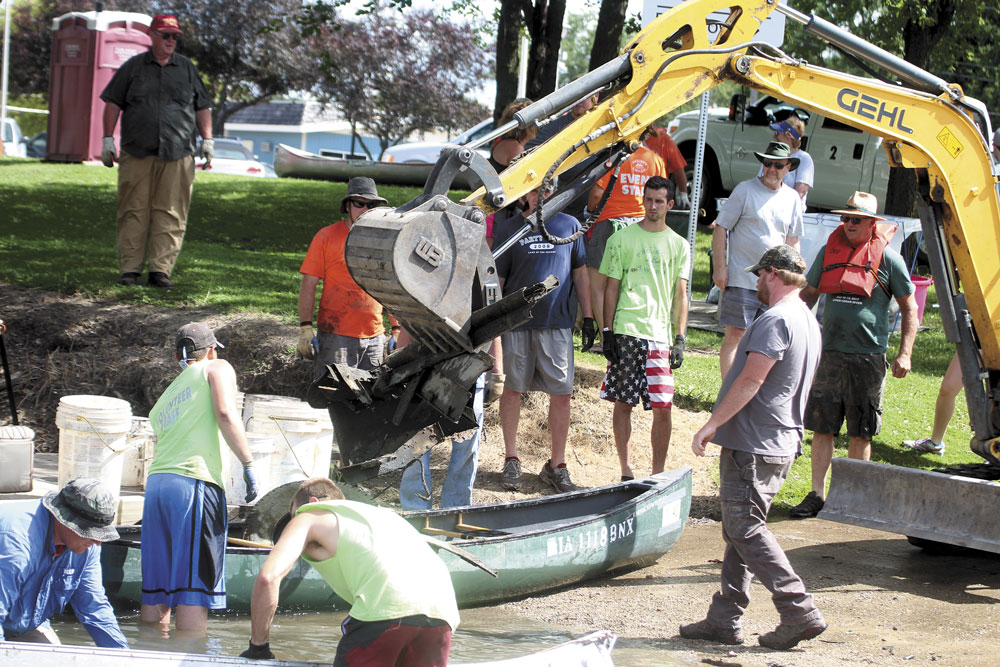
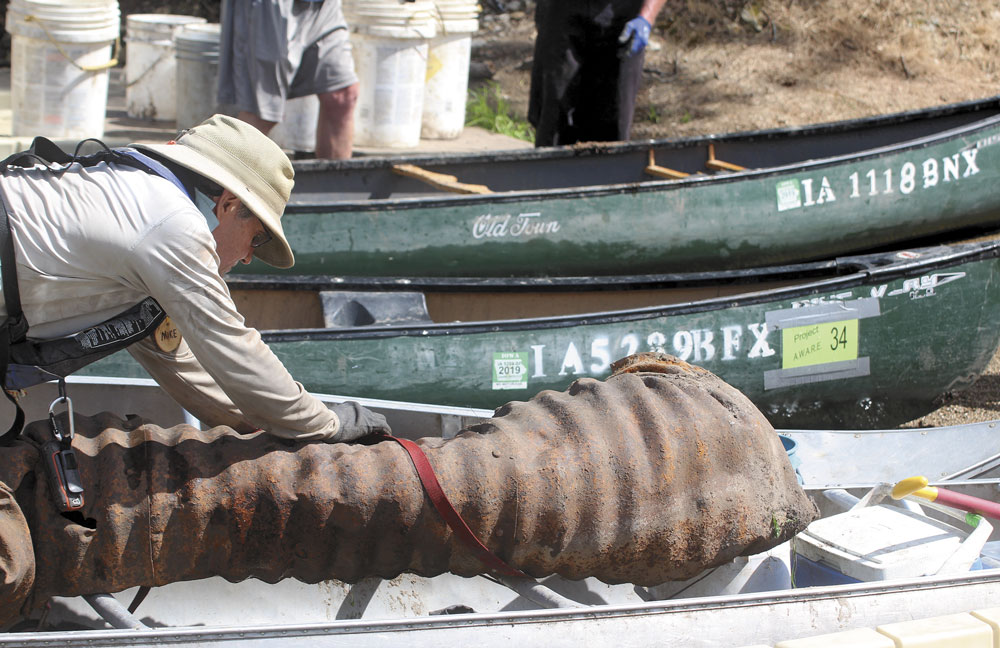
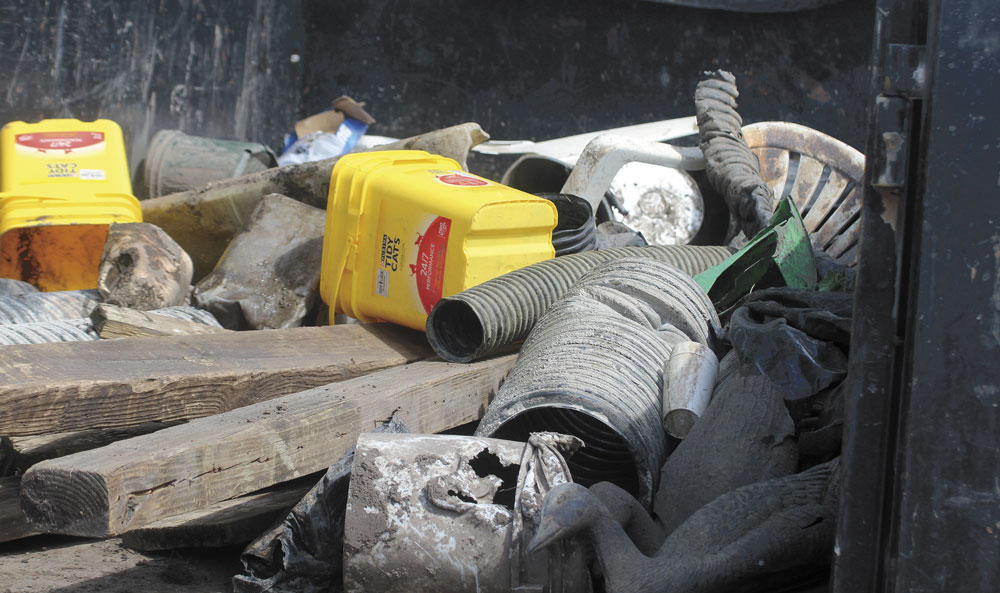
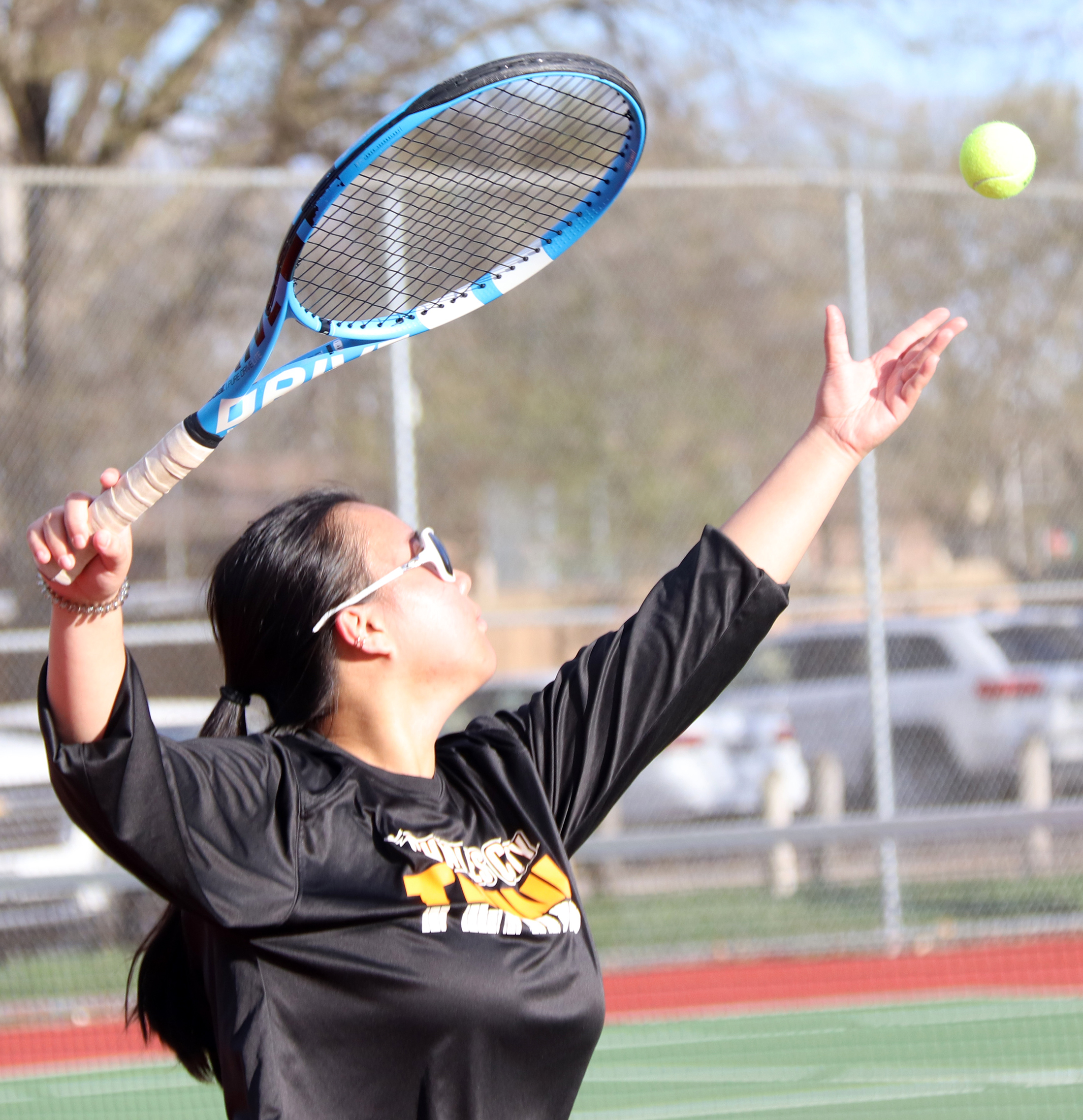
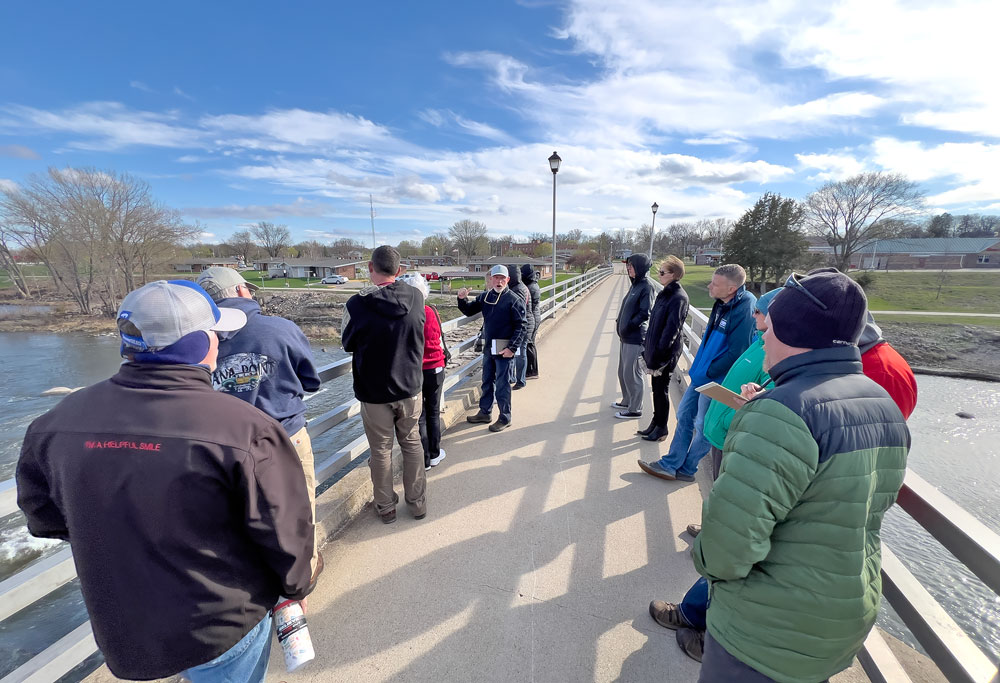
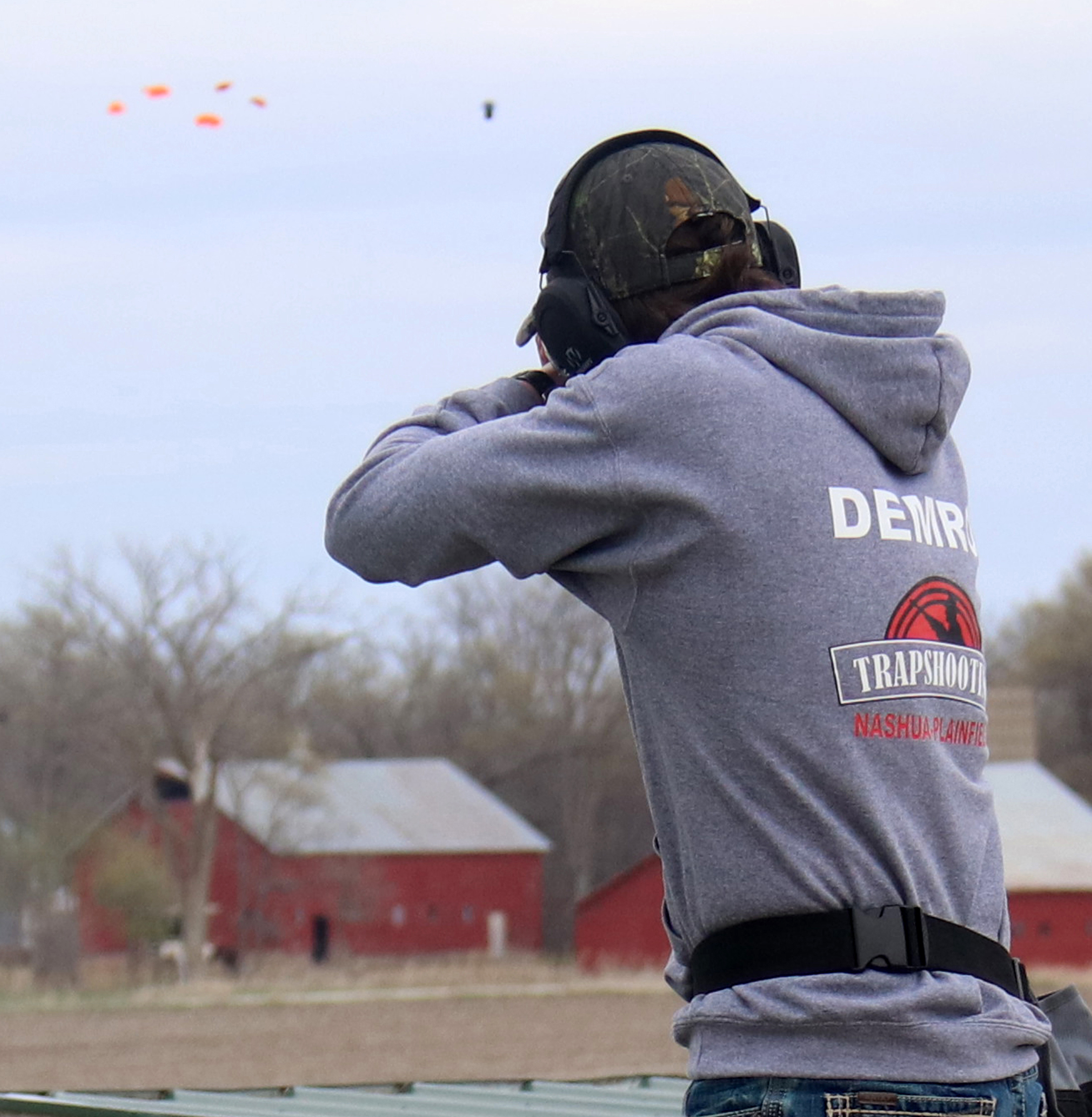
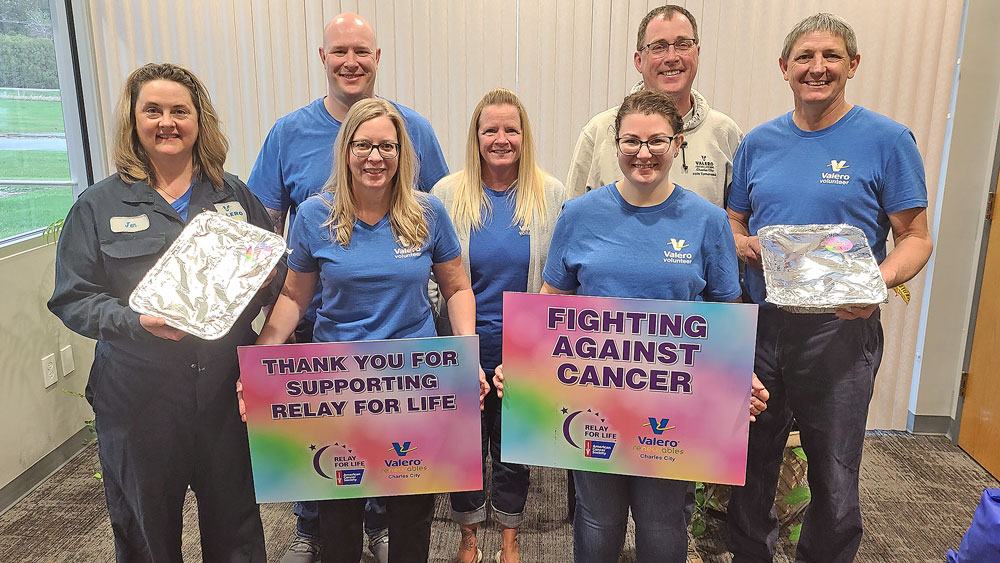


Social Share